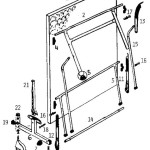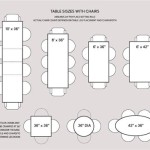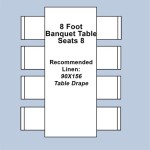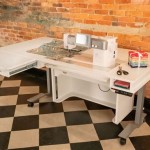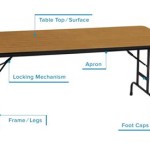How to Polish Scratches Out of a Wood Table
Scratches on a wood table can detract from its aesthetic appeal and overall value. Whether they are minor surface blemishes or more significant gouges, scratches are often repairable with the right techniques and materials. This article provides a detailed guide on how to effectively polish scratches out of a wood table, covering various methods and considerations for achieving a professional-looking result.
Before commencing any scratch removal process, it is crucial to assess the type and severity of the scratches. Understanding the depth and extent of the damage will dictate the appropriate method and materials required. Superficial scratches, affecting only the finish, require a different approach than deeper scratches that penetrate the wood itself. Furthermore, identifying the type of finish on the table (e.g., lacquer, varnish, polyurethane, wax) is essential to ensure compatibility with the chosen polishing agents and techniques. Incompatible materials can cause further damage or discoloration.
Identifying the Scratch Type and Finish
The first step in addressing scratches is to determine whether they are superficial or deep. A simple test involves running a fingertip lightly across the affected area. If the scratch can be felt, it likely extends beyond the finish and into the wood. If the surface feels smooth, the scratch is probably confined to the finish layer.
Identifying the type of finish is more complex but equally important. A common method involves applying a small amount of denatured alcohol to an inconspicuous area of the table. If the finish becomes sticky or dissolves, it is likely a lacquer or shellac. Polyurethane and varnish finishes are more resistant to solvents. Wax finishes can often be identified by their soft, waxy feel and tendency to collect dust. If uncertainty persists, consulting a professional furniture restorer or referring to the manufacturer's specifications is advisable.
Once the scratch type and finish are identified, gathering the necessary materials is the next step. This may include cleaning supplies, sandpaper (various grits), wood filler, stain, finish, polishing compounds, and application tools. The specific materials will depend on the chosen method for removing the scratches.
Addressing Superficial Scratches with Polishing Compounds
Superficial scratches that affect only the finish layer can often be effectively removed using polishing compounds. These compounds contain fine abrasives that gently buff away the surface imperfections, restoring the finish's original luster. Several options are available, including specialized furniture polishes, automotive scratch removers, and even simple household items like toothpaste.
Before applying any polishing compound, thoroughly clean the area around the scratch with a soft cloth and mild detergent. This removes any dirt or debris that could further scratch the finish during the polishing process. Rinse the area with clean water and allow it to dry completely.
Apply a small amount of the chosen polishing compound to a clean, soft cloth. Use a circular motion to gently buff the scratched area, applying moderate pressure. Avoid excessive pressure, which could damage the underlying finish. Continue buffing for several minutes, periodically checking the progress. As the polishing compound works, the scratches should gradually diminish in appearance.
Once the scratches are no longer visible, use a clean, dry cloth to remove any remaining polishing compound residue. Inspect the area carefully to ensure that the finish is uniform and free of streaks or hazing. If necessary, repeat the polishing process or apply a fresh coat of finish to enhance the luster and protection.
For harder finishes like polyurethane or varnish, a more aggressive polishing compound or a power buffer may be necessary to achieve satisfactory results. Exercise caution when using power tools, as excessive heat or pressure can damage the finish. Always test the technique in an inconspicuous area first to ensure compatibility and prevent unintended consequences.
Repairing Deep Scratches with Wood Filler and Staining
Deeper scratches that penetrate the wood require a more comprehensive approach than simple polishing. These types of scratches often necessitate the use of wood filler to restore the surface to its original level. Wood filler is a paste-like substance that fills the void created by the scratch, providing a smooth and even base for staining and finishing.
Begin by thoroughly cleaning the scratched area with a soft brush or vacuum cleaner to remove any loose debris or splinters. Use a utility knife or chisel to carefully remove any raised edges or jagged wood fibers around the scratch. This will create a clean and even surface for the wood filler to adhere to.
Select a wood filler that closely matches the color and grain of the surrounding wood. Tintable wood fillers are available, allowing for custom color matching. Mix the wood filler according to the manufacturer's instructions, adding a small amount of water or solvent if necessary to achieve the desired consistency.
Apply the wood filler to the scratch using a putty knife or similar tool. Overfill the scratch slightly, as the filler will shrink as it dries. Use the putty knife to smooth the surface of the filler, blending it seamlessly with the surrounding wood. Remove any excess filler with a damp cloth.
Allow the wood filler to dry completely according to the manufacturer's instructions. This may take several hours or even overnight. Once the filler is dry, sand it smooth with fine-grit sandpaper (e.g., 220-grit or higher). Be careful not to sand away the surrounding finish. Use a sanding block or orbital sander for larger areas, and hand-sand for smaller, more intricate details.
After sanding, clean the area with a tack cloth to remove any sanding dust. Apply a stain that closely matches the color of the surrounding wood. Use a small brush or cloth to apply the stain evenly, blending it into the adjacent areas. Allow the stain to penetrate the wood for a few minutes, then wipe away any excess with a clean cloth.
Once the stain is dry, apply a coat of finish that matches the original finish of the table. This may be lacquer, varnish, polyurethane, or wax. Apply the finish according to the manufacturer's instructions, using a brush, spray gun, or cloth. Allow the finish to dry completely, then apply additional coats as needed to achieve the desired level of protection and luster.
Finally, lightly polish the repaired area with a soft cloth and furniture polish to blend it seamlessly with the surrounding finish. Inspect the repair carefully to ensure that it is undetectable. If necessary, repeat the staining and finishing process to achieve a perfect match.
In cases of severe damage or extensive scratches, professional furniture restoration may be the most effective solution. Professional restorers have the expertise, tools, and materials to repair even the most challenging damage, restoring the table to its original beauty and value.

Tested 5 Ways To Remove Scratches From Wood Furniture A Erfly House

5 Easy Ways To Fix Scratched Furniture

6 Diy Ways To Remove Scratches From Wooden Furniture House Cleaning Tips Restoration S

Tested 5 Ways To Remove Scratches From Wood Furniture A Erfly House

Get Scratches Out Of Wood Practical Diy Advice New England

3 Simple Ways To Fix Deep Scratches In Wood Wikihow

Top Tips To Get Minor Scratches Out Of Wood Furniture Estate Buyers Antique Liquidators Downsizing

How To Fix Scratches In Your Wood Table

Tested 5 Ways To Remove Scratches From Wood Furniture A Erfly House

Use Nuts To Repair Small Nicks Scratches In Your Wood Furniture Macgyverisms Wonderhowto



